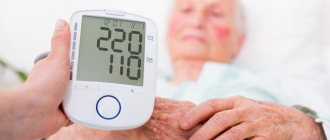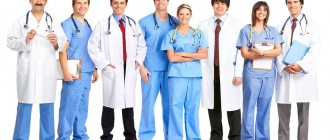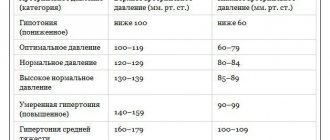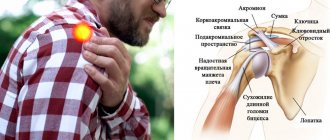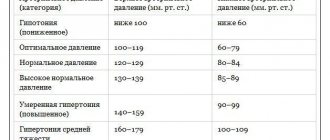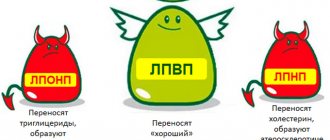Make an appointment by phone: +7 (343) 355-56-57
+7
- About the disease
- Cost of services
- Sign up
- About the disease
- Prices
- Sign up
Chest pain is a serious symptom and a reason to see a doctor.
Localization of pain in the left half of the chest and in the left breast is often associated with pathology of the cardiovascular system, although it may be due to a number of other reasons.
Causes of pain in the left chest:
1. Diseases of the cardiovascular system:
- cardiac ischemia
- inflammatory heart diseases (myocarditis, pericarditis)
- dissecting aortic aneurysm
2. Respiratory diseases:
- pneumonia
- pneumothorax
3. Diseases of the gastrointestinal tract:
- stomach ulcer
- gastroesophageal reflux disease (GERD)
- inflammation, trauma, tumors of the esophagus, stomach
- acute pancreatitis
- sliding hiatal hernia
4. Diseases of the musculoskeletal system:
- inflammatory diseases of the spine and ribs
- spinal and rib injuries
- degenerative diseases of the spine (osteochondrosis, spondylosis)
5. Infections of the soft tissues of the chest - herpes zoster
6. Diseases of the breast
CLINICAL depends on the cause of chest pain.
Coronary heart disease
can manifest itself as pain in the chest of a pressing, burning nature, in the left half of the chest, which can radiate to the left arm and/or both arms, throat, and lower jaw. Usually occurs during physical activity and stops when it is completed, or after taking nitroglycerin or administering analgesics. Such pain is accompanied by shortness of breath, weakness, sweating, and fear of death.
For inflammatory heart diseases
pain in the left chest occurs after an acute respiratory viral infection and is varied in nature (aching, stabbing, pressing, cutting). They are associated with body position and breathing, last for many hours, are in no way related to physical activity and disappear while taking anti-inflammatory drugs.
Dissecting aortic aneurysm
characterized by sudden, sharp, dagger-like pain of a diffuse nature in the chest, occurring after a sharp rise in blood pressure, intense jerking load (heavy lifting), accompanied by weakness, sweating, loss of consciousness, and a drop in blood pressure.
Pneumonia (pneumonia)
accompanied by cough, increased body temperature, stabbing, cutting, aching pain associated with coughing and breathing.
Against the background of tuberculosis
, chronic obstructive pulmonary disease, bronchiectasis, bullae - large bubbles - can form in the lungs. With a sharp cough or injury to the chest, they burst, air from them escapes into the chest and causes displacement of the internal organs located in it. This condition is called “pneumothorax” and is manifested by sharp, high-intensity chest pain, shortness of breath, a drop in blood pressure and even loss of consciousness.
Any disease of the gastrointestinal tract
may be accompanied by chest pain, especially in the left half. The fact is that all organs of the chest and abdominal cavity are closely connected to each other through innervation. And very often with gastroenterological disease there is “referred” pain. That is, the “epicenter” of the disease is in the abdominal cavity, and pain is felt in the chest.
The pain syndrome itself in this case is varied (stabbing, aching, pressing, cutting, bursting pain, etc.), and is not associated with physical activity. But it is associated with eating or feeling hungry, usually for many hours. It often goes away after eating or taking antispasmodics, and may be accompanied by nausea, vomiting, weakness, and the urge to defecate.
For pathology of the musculoskeletal system
(osteochondrosis, spondylosis) pain in the left chest is often local (point-like), although often diffuse, mostly sharp, piercing, sharp, associated with breathing and body position. It is not associated with physical activity and goes away on its own, or when changing body position, when taking anti-inflammatory drugs (Nise, diclofenac, ibuprofen).
Chest pain following injury
, may be associated with post-traumatic inflammation or fracture. The characteristics of this pain syndrome are similar to those described for osteochondrosis and spondylosis.
For herpes zoster
pain in the chest is burning, intense, sometimes unbearable, lasts for many hours, and is difficult to relieve with analgesics. On the second or third day of the pain syndrome, rashes appear on the chest. They resemble blisters, cause unbearable itching and go away after a while.
Breast diseases
(mastopathy, mastitis, oncological pathology) can also be accompanied by pain in the left half of the chest and under it. The pain is also absolutely varied, but more often it is local (small in area), sharp, stabbing, and often just discomfort in the breast area. In this case, the mammary gland itself may become engorged (increase in volume); it is possible to detect a focal compaction in it, often dense and painful.
Why does my heart hurt at night?
The connection between physical activity and an attack of angina is obvious. In response to the load, the pulse becomes faster, the heart vessels contract and the heart receives less blood, and with it oxygen, which is signaled by the appearance of squeezing and pressing pain in the chest. It is logical to assume that in a calm state, the delivery of oxygen to the heart muscle does not cause problems. Why then does “angina pectoris” come to lovers of passive recreation? Let's figure out what worries the heart in a dream.
An atypical type of angina was first noticed by American cardiologist Myron Prinzmetal in 1959. He described attacks of compressive chest pain at rest that caused temporary changes in the ECG, and called it “variant.” Later, the term was changed more than once: into Prinzmetal’s angina, angiospastic (from the Greek “angeion” - vessel), spontaneous (sudden), resting angina. Prinzmetal named the provocateur of the attack as a spasm (narrowing) of the large cardiac arteries, causing prolonged and intense pain in the chest. The attacks more often occurred at night or early in the morning and were accompanied by increased heart rate, arrhythmia, a drop in blood pressure, and even fainting.
Causes of night "noose"
The culprit of an unexpected spasm is often (not always!) atherosclerosis. In line to get the disease at a young age are heavy smokers, “malicious” untreated hypertensive patients, those with stomach ulcers, cholecystitis and even allergies. The connection between such different diseases is logical, given that they all disrupt the functioning of the autonomic nervous system, which is responsible for the constriction and dilation of blood vessels. Sometimes attacks of atypical angina occur from hypothermia or at the peak of emotions (release of stress hormones). But the most unpredictable variant of the course of the disease is the appearance of an attack for no reason.
Roller coaster that threatens lives
The differences between atypical angina and typical angina are in the strength, duration of the attack, which occurs at rest, and the accompanying vegetative manifestations (fast pulse, rhythm disturbances, including life-threatening ones, increased sweating, a feeling of trembling in the body). The time period when the attack occurs is also important. As a rule, the disease chooses the night-time hours, when the peak activity of the autonomic nervous system (and with it the unexpected surge of adrenaline) is maximum. During this period, the vessels are as relaxed as possible, which makes it difficult for them to adequately resist adrenaline.
What all attacks of atypical angina have in common is a sudden onset. The pain is most often pressing, cutting or burning, lasting 5-15 minutes (sometimes up to 30 minutes). Sometimes the attacks are serial in nature, occurring every 2-15 minutes. Outside of these attacks there may be no complaints at all. At the peak of chest pain, the adrenaline surge is similar in sensations to riding a roller coaster: the skin turns pale, becomes covered with sweat, the pulse quickens, headaches, nausea, and severe weakness occur as a result of changes in blood pressure (from 100/60 to 200/110 mm Hg! ). A rapid drop in pressure can result in fainting.
Rhythm disturbances often complement the pain syndrome at the time of an attack. In the best case, these are extrasystoles (and ventricular ones) or blockades of cardiac impulse conduction, in the worst case, life-threatening ventricular tachycardia or ventricular flutter. The latter, like an extensive myocardial infarction (a sharp vascular spasm completely blocks the access of blood and oxygen to the heart), complicated by a cardiac aneurysm, are fraught with sudden death.
The likelihood of complications developing is frightening in its unpredictability. An increase in the frequency and duration of attacks always worsens the prognosis. Damage to the heart vessels by atherosclerosis adds fuel to the fire, increasing the likelihood of sudden death to 25% per year. Clean heart vessels reduce this risk to 0.5% per year.
How to prove that angina is atypical
The main diagnostic sign of Prinzmetal's angina is changes in the ECG during a painful attack, which indicate ischemia of the heart muscle. As soon as the pain goes away, the tape shows the full normal. Alas, catching such changes on a standard ECG means sitting at the bedside of such a patient and painstakingly guarding his sleep. It is much easier to prove that the cause of the attack is a narrowing of the vessel, using Holter monitoring using an ECG (transient episodes of ischemia at night) or at the time of special provocative tests that cause a sharp narrowing of the heart vessels. But the “gold standard” of classical angina and its complications - stress tests (bicycle ergometry, treadmill test) and coronary angiography, on the contrary, will not detect serious disorders.
How to help a spasmodic vessel during an attack
Since pain when the lumen of a vessel narrows is always intense and long-lasting, the first step is to call an ambulance.
When providing emergency care to such a patient, one should not forget about the high risk of developing myocardial infarction:
- provide the patient with rest (optionally, sit him up in bed) and access to fresh air,
- take nitroglycerin under the tongue (tablets or capsules 0.5 mg; spray 10 g),
- Chew aspirin (not enteric form) or acetylsalicylic acid (0.5 mg tablets).
A specific drug for relieving vascular spasm is nifedipine 10 mg, taken sublingually. True, it should be taken with caution due to side effects (redness of the face, neck, increased heart rate, rhythm disturbances), so it would be better to ask a doctor about it.
Finally, a light massage of the face, back of the head, neck, shoulders, left half of the chest and knee joints will help to relieve the tension from the raging vegetative storm.
How to prevent vascular spasm in the future
It is better to treat Prinzmetal's angina in a hospital, and with tablets, and not with a surgeon's knife. To minimize the likelihood of another attack, it is advisable to eliminate the factors that provoke it: quit smoking and alcohol, normalize sleep, work and rest patterns, deal with “bad” cholesterol, engage in cardio training and, of course, take pills. The latter also dilate blood vessels, especially at night. These include the so-called calcium antagonists - amlodipine, cardillopine, norvasc, kalchek), verapamil or diltiazem. The first of them are best taken at night, the second - in the first half of the day or 2 times.
To ensure proper rest for the heart vessels, beta blockers are added to amlodipine.
Atypical angina definitely sets such a patient apart from the crowd of typical or “classic” ones. Alas, one fact remains unchanged - the risk of developing myocardial infarction. We should not forget that in an effort to save the heart from death, even non-standard approaches are sometimes acceptable.
Author: cardiologist at the clinic
Irina Lutik
Prevention
Prevention of chest pain syndrome consists of timely contacting a doctor for the first symptoms of the disease, a healthy lifestyle and following all the recommendations of the attending physician. FEATURES OF THE COURSE OF CHEST PAIN SYNDROME
in age groups is that in older people the pain syndrome is usually less pronounced. It can be masked by shortness of breath and weakness, dizziness, and its most common cause is ischemic heart disease.
In younger patients, the list of main causes includes traumatic and inflammatory diseases of the chest, lungs, and gastroenterological pathology.
There are no differences between individuals of both sexes in the characteristics of chest pain. In pregnant women, the clinical picture of chest pain differs little from that in other individuals.
Our clinic at the New Hospital has all the necessary examinations and specialists to conduct a full examination of a patient with chest pain
Where to go if your left side hurts
If the pain occurs only when walking or running quickly, and immediately stops after stopping, this is a normal situation in which there is no need to see a doctor. In other cases, you need to make an appointment with a therapist. Since it is impossible to make a diagnosis on your own, you will need to visit the hospital and conduct a series of tests:
- general blood analysis;
- blood chemistry;
- Ultrasound of the uterus, appendages;
- Ultrasound of the pancreas.
If a woman experiences pain in the pelvic area, just below the lower back and is nagging in nature, she should consult a gynecologist. Depending on the test results, the therapist may issue a referral to specialists - you will need to consult a gastroenterologist, neurologist or nephrologist.
Signs of heart pain
Signs that the heart hurts:
1. Localization . Pain in the upper chest, behind the sternum, most often speaks of coronary syndrome or pericarditis. But non-cardiac causes are also possible: pathology of the esophagus, costal chondrosis. Pain in the area of the apex of the heart (just below the left nipple) is most often not caused by cardiac pathology.
2. Irradiation . With coronary syndrome, pain radiates to the jaw, left shoulder blade, shoulder and neck. With pericarditis, pain intensifies at the height of inspiration. If the pain radiates to the axillary region, this is a sign of spinal pathology. With aortic dissection, the pain is widespread - it radiates to almost all parts of the body at the same time.
3. Leather . If there is a rash, the pain is most likely caused by shingles.
4. Beginning . With angina, the pain begins gradually and intensifies. In cases of aortic dissection or pneumothorax, it occurs suddenly.
5. Character . Classic pain with angina is squeezing. With mitral valve prolapse, they are long-lasting, aching, and do not go away after nitroglycerin.
6. Duration . With angina, the pain lasts up to 5 minutes, less often – up to 20 minutes. If it does not go away within this time, myocardial infarction is possible. However, if the pain continues for more than a day, and other symptoms do not appear, the cause may be pericarditis or pleurisy.
7. Circumstances . Heart pain often occurs due to physical activity or stress. If they appear or intensify in the supine position, it is highly likely that this is inflammation of the esophagus (reflux esophagitis), although pericarditis may also be present. Severe pain when breathing may indicate damage to the pleura or air entering the mediastinum (for example, a rupture of the esophagus).
Back pain. Heart Rate Failure
Anatoly
December 21, 2019
Good afternoon!.
With the onset of cold days in November, heart rate irregularities became more frequent. If you immediately hear knocking or tremors behind your sternum and quickly stand up to your full height and begin walking and doing various physical warm-ups of the spine and back muscles, then the disruption of your heart rhythm will quickly stop. There is a constant aching pain in the muscle to the left of the spine (lumbar region) thoracolumbar fascia, there is also aching pain on the ribs on the right side of the thoracic spine and on the lumbar spine. I underwent an MRI of the thoracic and cervical spine. In the cervical spine, signs of the presence of osteochondrosis of the cervical spine were found with predominant damage to the C2-C3, C3-C4, C4-C5, C5-C6, C6-C7 discs WITH THE PRESENCE OF PROTRUSIONS WITH ALTERED MR signal. Spondylosis. Spondyloarthrosis. Arthrosis of uncovertebral joints. No evidence was obtained for the presence of pathological changes in the projection of the craniovertebral junction. In the thoracic spine, osteochondrosis, spondyloarthrosis, degenerative-dystrophic changes in the thoracic spine were found. Disc protrusions Th10 - Th11, Th 11 - Th12, Th12-L1. Hemangiolipomas Th 7 and Th12. When I lie down on the floor on my back, a sensitive pain occurs that seems to run throughout my entire spine. After lying on my back for 1-2 minutes, the pain subsides, then I measure the pressure with a tonometer in a supine position with my legs pulled up to my stomach, then I turn my legs tucked in to the left - a weak aching pain occurs in the spine, i.e., twisting of the spine occurs. Holding my legs in this position, I measure the pressure, the blood pressure remains almost unchanged, then I return my legs back to their original position and lie in this position for 2-3 minutes, then I lower my tucked legs to the right and severe pain occurs - the pressure and pulse change significantly - they increase or are decreasing. Failure of the heart rhythm very often occurs after 1-00 am, you wake up from the urge to go to the toilet. First, a night's rest from 22-00 and 1-00 hours, my sleep is very sound and I often snore. After sleep, measured blood pressure in the morning is always higher than in the evening. During the daytime, heart rhythm disturbances often occur when you lie on your back on the sofa, watch TV or sleep on your back. There are no symptoms of arrhythmia. When a heart rhythm failure occurs, your blood pressure drops, you feel weak, then when the heart rhythm failure passes, the blood pressure quickly normalizes. An ECG and ultrasound of the heart were done after the end of the heart rhythm failure - no special changes were detected. Tell me what kind of diagnostic examination to undergo in order to identify what is causing the heart rhythm failure or what medications need to be purchased to prevent heart failure for a longer period. Since earlier in 2015, heart rhythm failure occurred only twice a year, then in the fall of 2021, the failure began to occur more and more often. I take the following medications - satohexal (in small doses 20-40 mg.), motherwort tablets and valerian, asparkam, lisinopril 10 mg. and acecardol 50 mg. I measure blood pressure every day 2-3 times a day and write it down in a diary.. Places on the spine or near the spine where there is constant aching pain I rub with shark power cream with bee venom, only this cream reduces the pain. I also massage my back with a massage pillow, and massage my neck with a special neck massager. I am 61 years old. At this time, I lost 12 kg, in the spring of 2021 I weighed 113 kg, in the fall of 2021 - 101 kg. Chronic diseases:
Chronic pharyngitis, adenoma of the left adrenal gland.
The question is closed
spine
arterial pressure
lumbar region
